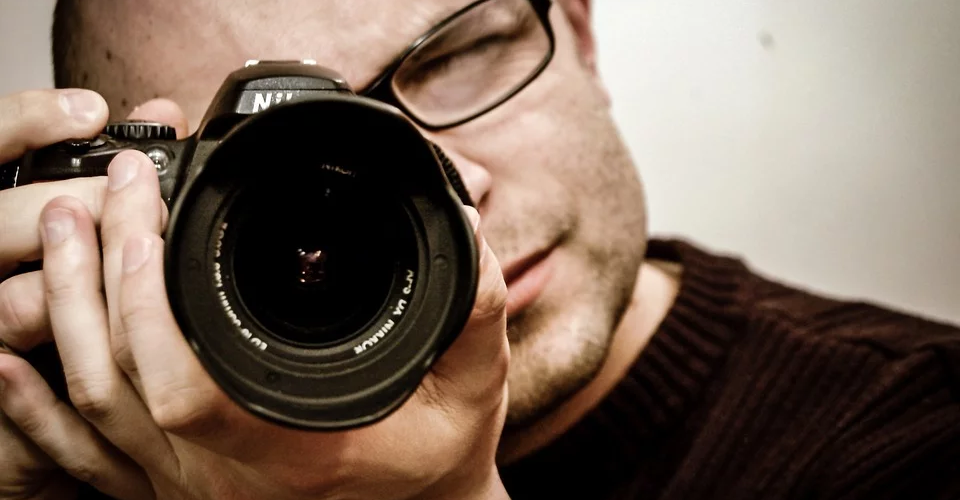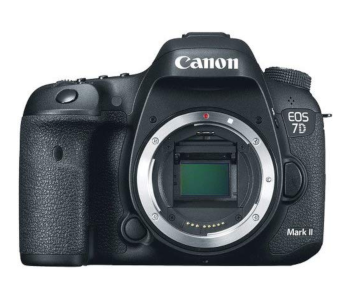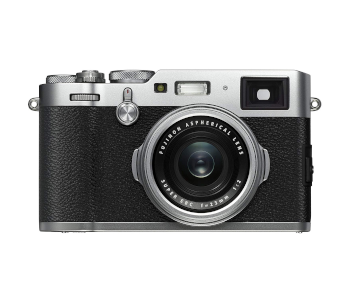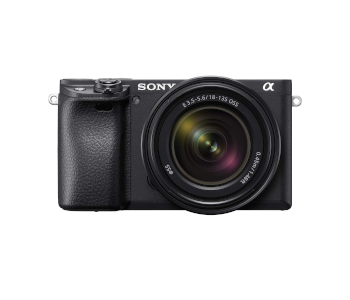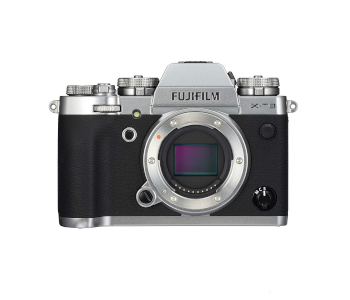8 Best APS-C Cameras
What are the best APS-C camera choices this year, and why might you want one? That’s what this buyer’s guide is all about. Even full-frame enthusiasts find room for an APS-C in the kit bag. These capable cameras have advanced a lot in a short space of time. Raw beginners reading here should first understand what a digital camera sensor is to appreciate the comparison.
| Budget |
|---|
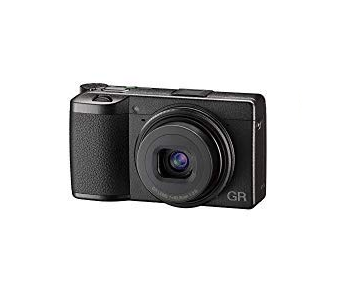 |
| Ricoh GR III Digital Camera |
| 4.5/5.0 |
| Sensor: 24MP APS-C |
| Battery Life: 200 shots |
| Travel-friendly, 3” touchscreen, built-in WiFi, RAW shooting, image stabilization. |
| Check Amazon |
| Best Value |
|---|
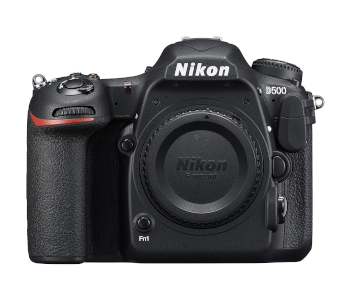 |
| Nikon D500 APS-C Digital-SLR |
| 4.8/5.0 |
| Sensor: 21MP APS-C |
| Battery Life: 1240 shots |
| Solid build, ergonomics, tilting 3.2” LCD touchscreen, top LCD, 4K video. |
| Check Amazon |
| Top Pick |
|---|
 |
| Leica CL Mirrorless Camera |
| 4.7/5.0 |
| Sensor: 24MP APS-C |
| Battery Life: 220 shots |
| Ultra-compact, electronic viewfinder, LCD touchscreen, customizable dials. |
| Check Amazon |
Sensors Simplified
An image sensor is a physical part of a digital camera, so that makes it a piece of hardware. It’s also a solid-state component, which means there are no moving parts, hence the term. The job of a sensor is to capture light and convert it into an image. With cameras, that light is whatever you see through the viewfinder or LCD screen. Thus, digital sensors are the electronic version of film.
Bigger is better when it comes to sensor size, but it doesn’t always matter (more on that soon). Larger sensors capture more light, and that makes them superior in low-light situations. They also produce higher quality images with greater details. That’s especially noticeable when blowing photos up.
APS-C CMOS Sensors
APS-C stands for Advanced Photo System Type C. It’s fast becoming a favored sensor size in modern mid-range digital cameras. It’s smaller than the full-frame 35mm sensor but bigger than micro 4/3. The typical ASP-C sensor size is 23.5 x 15.6mm, aside from Canon cameras. Canon APS-C sensors are slightly smaller at 22.3 x 14.9mm.
APS-C Vs. Full-Frame (FF)
APS-C cameras have 3 things going for them over full-frame alternatives:
- Lighter and more compact
- APS-C digital cameras and lenses cost less
- Easier to use
Only the most critical of eyes notice any significant difference in image quality between the two. Seriously, APS-C cameras are exceptional tools. Professionals use FF cameras because the pro-bodies have a plethora of pro-features. They also offer more depth of field (DOF) control and better dynamic range. But the heft of an FF camera makes them bulky and cumbersome to use in comparison.
Only you can know if the benefits of a full-frame digital camera are worth the extra cost. Almost every photographer at every level now values the latest models of APS-C cameras.
About My ‘Best APS-C Camera’ Guide
Some APS-C cameras are better than others, though most of the newer choices are remarkable. There’s no perfect camera, but there are models that are perfect for individual photographers. I’ve selected 8 ASP-C products for review across all budgets. These picks are favored by industry experts and receive plenty of positive feedback from those who buy them.
The table shows the products as they appear on the page. The three at the top are the Editor’s Picks for the Best Budget ASP-C camera, Best Value, and the Top Choice.
APS-C Cameras Comparison Table
| Make and Model | Sensor | Battery Life | Price |
|---|---|---|---|
| Ricoh GR III APS-C Digital Camera | 24MP APS-C | 200 shots | Check Price |
| Nikon D500 APS-C Digital-SLR | 21MP APS-C | 1240 shots | Check Price |
| Leica CL APS-C Mirrorless Camera | 24MP APS-C | 220 shots | Check Price |
| Nikon Z50 DX-format APS-C Camera | 21MP APS-C | 320 shots | Check Price |
| Canon EOS 7D Mark II APS-C DSLR | 20MP APS-C | 670 shots | Check Price |
| Fujifilm X100F APS-C Digital Camera | 24MP APS-C | 390 shots | Check Price |
| Sony Alpha a6400 Compact APS-C Camera | 24MP APS-C | 410 shots | Check Price |
| FUJIFILM X-T3 Mirrorless APC-C Camera | 26MP APS-C | 390 shots | Check Price |
1. Ricoh GR III APS-C Digital Camera | Best Budget
Editor’s Rating: 4.5/5
The Best Budget APS-C camera goes to the travel-friendly Ricoh GR III. It’s equipped with a fixed 28mm F/2.8–16 prime lens and a large 24MP APS-C-size CMOS Sensor.
- Best feature 1: 24MP APS-C-size CMOS sensor
- Best feature 2: Advanced point-and-shoot compact
- Plus points: Travel-friendly, 3” touchscreen, built-in WiFi, RAW shooting, image stabilization
- Minus points: Glossy touchscreen, subpar battery life, no built-in flash, slow AF
Ricoh GR III Camera Highlights
Ricoh’s GR Digital III is a prime example of an advanced point-n-shoot camera with a large APS-C- sensor. The small form is welcome as more photographers demand compact, lightweight, travel-friendly products. It also boasts streamlined controls and a 3” LCD touchscreen display for easy navigation. The GR III lens is tack sharp and excels in close-focus photography.
This camera doesn’t have a built-in flash, but it does have an external hot-shoe. Ricoh’s GR III is super-comfortable to hold and operate, thanks to its ergonomic pocketable design. Other key features are the built-in WiFi, image stabilization, RAW shooting, and manual controls. The 1080P video at 60fps is decent rather than exceptional, but then this is primarily a tool for capturing stills.
See the Ricoh GR III tech specs and pros table below for more features and functions.
The Not So Good
The touchscreen is welcome, but its reflective finish makes visibility hard in bright sunlight. It doesn’t tilt either, which would have lessened the problem somewhat. Another letdown is the miserable battery life that delivers just 200 shots max per charge. Two other negatives are no built-in flash and the slow-responding autofocus in low light situations. That’s an issue for low-light photographers.
| Tech Specs |
|---|
| Brand Name: Ricoh |
| Camera Type: Advanced compact |
| Sensor: 24MP APS-C |
| Video Resolution: 1080P |
| Stills: 24 megapixels |
| Max Shutter speed: 1/4000s |
| Max Aperture: F/2.8 |
| Card Support: UHS-I |
| Battery: DB-110 |
| Battery Life: 200 shots |
| Screen Type: Fixed 3” LCD Screen |
| Camera Weight: 9.1 oz. |
| Dimensions: 4.3 x 2.4 x 1.3” |
| The Pros |
|---|
| Advanced point-and-shoot camera |
| Travel-friendly, ergonomic design |
| Fast shutter speed |
| Face Detection Focusing |
| 24MP APS-C-size CMOS sensor |
| Good sized touchscreen |
| Built-in WiFi |
| RAW shooting |
| Image stabilization (IS) |
| Manual controls |
| AE Bracketing |
| Remote control w/ smartphone |
| The Cons |
|---|
| Glossy touchscreen |
| Subpar battery life |
| No built-in flash |
| Slow AF, especially in low-light |
2. Nikon D500 APS-C Digital-SLR | Best Value
Editor’s Rating: 4.8/5
Nikon’s D500 is a popular high-end entry-level F mount DSLR camera with a 21MP APS-C sensor. There are over 300 native lenses available, so the photographic potential is massive.
- Best feature 1: 21MP APS-C sensor
- Best feature 2: Superb autofocus (AF) system
- Plus points: Solid build, ergonomics, tilting 3.2” LCD touchscreen, top LCD, 4K video
- Minus points: Subpar movie autofocus, no focus peaking
Nikon D500 Digital-SLR Highlights
The Nikon D500 is an exceptional Digital-SLR for its class, and a camera that oozes with confidence. It boasts superb ergonomics and a durable magnesium alloy body. The camera’s water-drop and dust resistance make it a capable tool for shooting outdoors in harsher climes. Its large, 3.2” tilting LCD touchscreen lets you compose shots effortlessly from low, high, or awkward angles.
Nikon’s D500 also has a top-mounted LCD, which is invaluable for tripod work and night photography. The camera’s superb AF and fast continuous shooting make it a remarkable tool for action. Think wildlife, sports, and all other movement photography. Image quality is about as good as it gets for a digital camera in this price category. The D500 supports UHS-II memory cards.
Photographers appreciate the illuminated buttons, long 1240 shots battery life, and dual card slots. Other standout features are the built-in WiFi, Bluetooth, and NFC Connectivity. Videographers get ultra-HD 4K video, a headphone port, and an external microphone port.
See the Nikon D500 tech specs and pros table below for more features and functions.
The Not So Good
There are a few negatives that could be deal-breakers for videographers. The movie autofocus is far from impressive. The camera doesn’t have a focus peaking either. And the so-called ‘Silent Mode’ is a bit misleading. It is quiet, but it’s not soundless. Finally, this model is an expensive choice if you don’t need a camera for action photography.
| Tech Specs |
|---|
| Brand Name: Nikon |
| Camera Type: Digital-SLR |
| Sensor: 21MP APS-C CMOS |
| Max Video Resolution: 4K |
| Stills: 21 megapixels |
| Max Shutter speed: 1/8000s |
| Card Support: UHS-II |
| Battery: EN-EL15 Rechargeable Li-ion |
| Battery Life: 1240 shots |
| Screen Type: 3.2” Tilting LCD Touchscreen |
| Camera Weight: 30.33 oz. |
| Dimensions: 5.79 x 4.53 x 3.19” |
| The Pros |
|---|
| 36 impressive features & functions |
| 21MP APS-C sensor |
| Superb autofocus (AF) system |
| Solid build, excellent ergonomics |
| Illuminated function buttons |
| Environmental sealing |
| Articulating touchscreen |
| Top-mounted LCD panel |
| External mic port |
| Headphone port |
| Flash sync port |
| Built-in WiFi, Bluetooth, NFC |
| Fast continuous shooting |
| Long battery life |
| Remote control w/ smartphone |
| The Cons |
|---|
| Subpar movie autofocus |
| No focus peaking |
| Not truly silent mode |
| Quite expensive |
3. Leica CL APS-C Mirrorless Camera | Top Pick
Editor’s Rating: 4.7/5
The Editor’s Top Pick goes to the Leica CL. It’s a high-quality compact mirrorless digital camera with a 24MP APS-C CMOS Sensor. This beauty comes equipped with a Leica 18mm F/2.8 pancake lens.
- Best feature 1: 24MP APS-C CMOS sensor format
- Best feature 2: Large 3” touchscreen LCD
- Plus points: Ultra-compact, electronic viewfinder, LCD touchscreen, customizable dials
- Minus points: Fixed screen, no in-body flash, high price tag
Leica CL Mirrorless Camera Highlights
Leica’s CL appeals to those who seek a minimalistic yet highly functional camera. Its compact, solid metal finish and user-friendly handling make it an excellent travel camera. The electronic viewfinder gives users a comfortable and bright eye-level view. There’s also a large 3” LCD touchscreen on the rear. On the top are a couple of dials with customizable buttons in the centers.
The CL’s 14.2MP image quality is remarkable, but then you’d expect it to be in this category. Videographers don’t get a lot of creative control, but the camera can shoot in 4K at 30fps. Other highlights include built-in WiFi, smartphone remote control, and time-lapse recording. My biggest gripe with this otherwise exceptional mirrorless Leica is the low, 220-shot battery life.
See the Leica CL tech specs and pros table below for more features and functions.
The Not So Good
It’s easier to damage articulating touchscreens by accident, but few would dispute their versatility. The Leica CL is restricted as it has a fixed display. It doesn’t have a built-in flash, either, though it does have a hot shoe for external flash units. And no environmental sealing means you must be extra careful on bad weather days. Finally, the camera’s high price tag puts it out of reach for some.
| Tech Specs |
|---|
| Brand Name: Leica |
| Camera Type: Semipro mirrorless |
| Sensor: 24MP APS-C CMOS |
| Lens Mount: Leica L |
| Max Video Resolution: 4K |
| Stills: 24 megapixels |
| Max Shutter speed: 1/25000s |
| Max Aperture: F/2.8 |
| Card Support: UHS-II |
| Battery: Leica BP-DC12 Lithium-Ion |
| Battery Life: 220 shots |
| Screen Type: Fixed 3” LCD touchscreen |
| Camera Weight: 14.22 oz. (body only) |
| Dimensions: 5.16 x 3.07 x 1.77” |
| The Pros |
|---|
| 24MP APS-C CMOS sensor |
| Rear touchscreen LCD |
| Ultra-compact and lightweight |
| Built-in electronic viewfinder |
| Built-in WiFi |
| Large touchscreen |
| Top-mounted customizable dials |
| Flash sync port |
| Remote control w/ smartphone |
| Face Detection Focusing |
| The Cons |
|---|
| LCD screen doesn’t tilt |
| No built-in flash |
| Doesn’t have weather sealing |
| High price tag |
| Low battery life |
4. Nikon Z50 DX-format APS-C Digital Camera
Editor’s Rating: 4.6/5
Meet the Nikon Z 50. It’s an entry-level mirrorless camera with a 21MP APS-C BSI-CMOS Sensor. It comes with the very capable NIKKOR Z DX 16–50mm f/3.5 to f/6.3 VR lens.
- Best feature 1: 21MP APS-C BSI-CMOS Sensor
- Best feature 2: Lightweight, compact, and rugged
- Plus points: Easy handling, large EVF, 4K video, built-in flash, deep grip, image quality, WiFi
- Minus points: Few native lenses, no image stabilization
Nikon Z50 DX-format Camera Highlights
Nikon’s Z50 is the smallest interchangeable camera of the entire Z series. Consider this model if you want a lightweight, compact DX-format camera with a rich feature set. Don’t let the small form fool you as Nikon’s made this puppy using magnesium-alloy. It’s a joy to handle with its solid feel and pleasing ergonomics. The deep, comfortable grip and angled shutter button are especially welcome.
The large EVF is a bonus, and image quality also gets a big thumbs-up. The colors are accurate, and there’s little to no retouching needed for most shots taken with the Standard Picture Control. Other features worth a mention are built-in WiFi, Bluetooth, articulating touchscreen, and a weather-sealed body. Videographers get 4K video and a microphone port for enhanced audio control.
See the Nikon Z 50 tech specs and pros table below for more features and functions.
The Not So Good
There are only 15 native lenses for the Nikon Z lens mount at the last check. The camera doesn’t have image stabilization, but two of the 15 lenses offer optical image stabilization (OIS). Another con for the Z50 is its low battery life that only gives 320 shots per charge.
| Tech Specs |
|---|
| Brand Name: Nikon |
| Camera Type: Mirrorless |
| Sensor: 21MP APS-C BSI-CMOS |
| Mount: Nikon Z lens |
| Max Video Resolution: 4K |
| Stills: 21 megapixels |
| Max Shutter speed: 1/4000 sec |
| Max Aperture: 3.5 |
| Card Support: UHS-II |
| Battery: EN-EL25 rechargeable |
| Battery Life: 320 shots |
| Screen Type: 3.2” articulating touchscreen |
| Camera Weight: 14 oz. |
| Dimensions: 5 x 3.7 x 2.36” |
| The Pros |
|---|
| 21MP APS-C BSI-CMOS Sensor |
| Lightweight, compact, and rugged |
| Easy handling |
| Articulating touchscreen |
| Large Electronic viewfinder |
| UHD video capability |
| External mic port |
| Flash sync port |
| Environmental sealing |
| Time-lapse recording |
| Built-in flash |
| Built-in WiFi |
| Bluetooth |
| Deep, comfortable grip |
| Superb image quality |
| Face detection focusing |
| Remote control w/ smartphone |
| The Cons |
|---|
| Few native lenses |
| No in-body image stabilization |
| Low battery life |
5. Canon EOS 7D Mark II APS-C Digital-SLR
Editor’s Rating: 4.5/5
Canon brought the EOS 7D Mark II out to replace the 7D. It’s characterized by the 20MP APS-C CMOS Sensor and Dual DIGIC 6 processors. Let’s look at what else it offers.
- Best feature 1: 20MP APS-C CMOS Sensor, Dual DIGIC 6 processors
- Best feature 2: Large bright 3” LCD screen
- Plus points: Rugged build, ergonomic body, weather-sealed, top LCD, OVF, dual card slots
- Minus points: No articulating touchscreen, no built-in WiFi, no image stabilization (IS)
Canon EOS 7D Mark II Camera Highlights
Canon’s EOS 7D Mark II has a rugged magnesium alloy weather-sealed body. The dust and moisture-resistance let you focus more on the shoot and less on the weather. At the back is a large 3” anti-reflective, smudge-resistant LCD screen. There’s also a built-in eye-level optical viewfinder (OVF) with 100% coverage for composition accuracy. The dual memory card slots are another welcome feature.
This camera’s body is heavy at over 32 ounces, but it feels solid and instills confidence. The top-mounted LCD panel is invaluable for night shoots or working low to the ground. Other selling points are the built-in GPS and long battery life of around 670 shots per charge. The 7D Mark II takes impressive high-resolution stills, thanks to its 20.2MP APS-C CMOS sensor and Dual DIGIC 6 processors.
Acceptable Video
For video, you get to shoot Full-HD 1080p at a range of frame rates. The external mic and headphone ports are sure to please videographers too. Video quality is more than acceptable for most situations. Those who want the highest resolution should consider cameras with Ultra-HD 4K video, though.
See the Canon’s EOS 7D Mark II tech specs and pros table below for more features and functions.
The Not So Good
The rear LCD screen is the fixed type, and that restricts its usefulness. It’s not a touchscreen either. The absence of an articulating touchscreen is something that bothers you, or it doesn’t. Other missing features are built-in WiFi and no image stabilization. However, 100 native lenses offer optical image stabilization for Canon’s EF/EF-S lens mount.
| Tech Specs |
|---|
| Brand Name: Canon |
| Camera Type: Semi-Pro DSLR |
| Sensor: 20MP APS-C CMOS |
| Mount: Canon EF/EF-S |
| Max Video Resolution: 1080p |
| Stills: 20 megapixels |
| Max Shutter speed: 1/8000s |
| Card Support 1: SD/SDHC/SDXC (UHS-I) |
| Card Support 2: CompactFlash (UDMA 7) |
| Battery: LP-E6N Lithium-Ion |
| Battery Life: 670 shots |
| Screen Type: 3.0” Clear View II LCD |
| Camera Weight: 32.10 oz. |
| Dimensions: 5.87 x 4.41 x 3.07” |
| The Pros |
|---|
| 20mp APS-C CMOS sensor |
| Dual DIGIC 6 processors |
| Large bright LCD screen |
| Top-mounted LCD panel |
| Rugged magnesium-alloy build |
| Good ergonomics |
| Weather-sealed body |
| Optical viewfinder (OVF) |
| Dual memory card slots |
| Built-in GPS |
| Flash sync port |
| AF micro adjustment |
| Long battery life |
| Good low light ISO |
| External microphone port |
| External headphone port |
| Time-lapse recording |
| Face Detection Focusing |
| The Cons |
|---|
| No articulating screen |
| No touch controls |
| No built-in WiFi |
| No image stabilization (IS) |
6. Fujifilm X100F APS-C Digital Camera
Editor’s Rating: 4.8/5
This review is for the Fujifilm X100F. It’s a premium compact camera with a large 24.3MP APS-C CMOS sensor. The X100F has a fixed Fujinon 23mm fast F/2 Prime Lens with a built-in ND filter.
- Best feature 1: Large 24.3MP APS-C CMOS sensor
- Best feature 2: Bright, wide-angle lens
- Plus points: Easy to use, built-in ND filter, manual controls, hot shoe, RAW, battery life
- Minus points: No tilt or touchscreen, no IS, heavy body, not weather-sealed
Fujifilm X100F Camera Highlights
The simplicity of the Fujifilm X100F is one of its main attractions. It’s a niche product that boasts tack-sharp images, ease-of-use, and an elegant style. The fixed 23mm f/2 wide-angle prime lens challenges one’s creative side and makes you a better photographer. The manual focusing and manual exposure controls also encourage creativity. A built-in 3-stop neutral density (ND) filter is another nice touch.
This camera has an integrated flash and a hot-shoe to mount an external flash of your choosing. Other quality features include built-in WiFi, electronic and optical viewfinder, and RAW shooting. You can use a regular smartphone to control some features remotely. The X100F battery life is quite decent at 390 shots per charge. That’s 90 shots above average for a camera in its class.
The highest video resolution is 1080p Full-HD up to 60fps (frames per second). And the external microphone port is a must-have feature for videographers who demand the best audio.
See the Fujifilm X100F tech specs and pros table below for more features and functions.
The Not So Good
A few features are missing that may be deal-breakers for some. The rear LCD is the view only fixed variety, so no tilt function or touch control. Another con is the lack of image stabilization. That’s not such an issue with lightweight compacts, but the X100F has a heavy, 1.03 lb. body. The last con is the absence of environmental sealing. That means you must take extra care when shooting outdoors.
| Tech Specs |
|---|
| Brand Name: Fujifilm |
| Camera Type: Large sensor compact |
| Sensor: 24MP APS-C CMOS X-TRANS III |
| Mount: Fixed lens |
| Max Vid Resolution: FHD 1080p @ 60fps |
| Stills: 24 megapixels |
| Max Shutter speed: 1/4000 sec |
| Max Aperture: F/2 |
| Card Support: 32GB UHS-I |
| Battery: NP-W126S Lithium-Ion |
| Battery Life: 390 shots |
| Screen Type: Fixed 3” LCD |
| Camera Weight: 16.54 oz. |
| Dimensions: 5 x 2.95 x 2.05” |
| The Pros |
|---|
| Large 24.3MP APS-C CMOS sensor |
| Fast, wide-angle prime lens |
| Comfortable and easy to use |
| Built-in ND filter |
| Built-in WiFi |
| EVF and OVF viewfinders |
| Fast shutter speeds |
| Manual focusing |
| Manual Exposure |
| External hot shoe |
| External microphone port |
| RAW shooting |
| Above average battery life |
| Time-lapse recording |
| AE bracketing |
| Fast continuous Shooting |
| Remote control w/ smartphone |
| The Cons |
|---|
| No articulating or touchscreen |
| No image stabilization |
| Heavy body |
| Lacks weather-sealing |
7. Sony Alpha a6400 Compact APS-C Camera
Editor’s Rating: 4.7/5
The penultimate review goes to the much-loved Sony Alpha a6400. It’s a semi-professional mirrorless camera with a 24MP APS-C CMOS sensor. This one comes with a capable 18-135mm zoom lens.
- Best feature 1: Large 24MP APS-C CMOS sensor
- Best feature 2: Great all-rounder 18-135mm zoom lens
- Plus points: Compact & travel-friendly, 3” flip screen, EVF, good in low light, WiFi, Bluetooth
- Minus points: Quite heavy, no image stabilization, average battery life
Sony Alpha a6400 Camera Highlights
Sony has packed a lot of camera into this small, light-tight box it calls the Alpha a6400. There are about 30 noteworthy features and functions and only a couple of negatives. It has a neat, compact, travel-friendly build that fits nicely into the hands. The camera sports a large 3” LCD flip screen and a sharp built-in electronic viewfinder (EVF). The included 18-135mm lens is an exceptional all-rounder.
Sony’s 24.2MP APS-C sensor and improved BIONZ X processor deliver detailed stills with true color reproduction. The camera’s Phase Detection Autofocus (AF) is fast and accurate in most photographic situations. There’s plenty of user praise for the camera’s exceptional low-light capability too. Other highlights include a built-in WiFi, Bluetooth, NFC connectivity, and a weather-sealed body.
There’s a handy built-in flash and a hot shoe to mount external units. This camera is a capable video tool as well, offering 4K UHD recording. You also get an external mic port to enhance the audio.
See the Alpha a6400 tech specs and pros table below for more features and functions.
The Not So Good
There are no major negatives with the Sony Alpha a6400 digital mirrorless camera. OK, it’s on the heavy side of average, and image stabilization would have been welcome. Still, there are around 30 native lenses that have optical image stabilization (OIS). The battery life is only average, with about 400+ shots per charge. Any other negative points are minor nitpicks rather than serious cons.
| Tech Specs |
|---|
| Brand Name: Sony |
| Camera Type: Semi-Pro mirrorless |
| Sensor: 24MP APS-C CMOS |
| Mount: Sony E lens |
| Max Video Resolution: 4K |
| Stills: 24 megapixels |
| Shutter speed: 1/4000 sec |
| Max Aperture: F/3.5 |
| Card Support: UHS-I |
| Battery: NP-FW50 Lithium-Ion |
| Battery Life: 410 shots |
| Screen Type: 3” tilting LCD touchscreen |
| Camera Weight: 14.22 oz. |
| Dimensions: 4.72 x 2.64 x 2.36″ |
| The Pros |
|---|
| Large 24MP APS-C CMOS sensor |
| All-rounder 18-135mm lens |
| Compact & travel-friendly |
| Rugged body w/ magnesium alloy |
| Environmental sealing |
| Large, bright flip screen |
| Electronic viewfinder (EVF) |
| Built-in flash |
| Flash hot shoe |
| Excels in low light |
| Built-in WiFi |
| Bluetooth |
| NFC connectivity |
| External mic port |
| Time-lapse recording |
| Face Detection Focusing |
| Panorama shooting |
| 120 high-speed video |
| Remote control w/ smartphone |
| The Cons |
|---|
| Quite heavy |
| No in-body image stabilization |
| Average battery life |
8. FUJIFILM X-T3 Mirrorless APC-C Camera
Editor’s Rating: 4.4/5
Last of the current lineup is for the FUJIFILM X-T3. It’s a semi-pro mirrorless type camera with an APS-C BSI-CMOS sensor. This one comes with a FUJIFILM XF 18–55mm f/2.8-4 R LM OIS zoom lens.
- Best feature 1: Large 26MP APS-C BSI CMOS Sensor
- Best feature 2: XF 18–55mm f/2.8-4 zoom lens
- Plus points: Compact design, well-made, EVF, large LCD touchscreen, 4K video
- Minus points: No sensor-based image stabilization, low-average battery life
FUJIFILM X-T3 Mirrorless Camera Highlights
FUJIFILM designed this unique mirrorless camera with photographers and videographers in mind. The quality of the high-resolution stills and 4K DCI video is exceptional. Videographers have access to an external microphone and headphone ports. FUJIFILM’s X-T3 has environmental sealing, dual SD card storage slots, and a flash sync port. You can also control many of its features via a smartphone.
The camera’s compact design has a slim lens mount and a reasonable handgrip. There are convenient on-body controls, a built-in electronic viewfinder (EVF), and a rear 3.0” articulating LCD touchscreen. There are 27 noteworthy features in total and only a couple of downsides.
See the FUJIFILM X-T3 tech specs and pros table below for more features and functions.
The Not So Good
This camera would have been close to perfect if it wasn’t for a couple of negatives. It doesn’t have any sensor-based image stabilization. That means you must invest in the costlier lenses with optical image stabilization (OIS) if you want them. There are currently 12 of the 51 native lenses with OIS. The battery life is on the poor side of average for a mirrorless model at only 390 shots per charge.
| Tech Specs |
|---|
| Brand Name: Fujifilm |
| Camera Type: Semi-pro mirrorless |
| Sensor: 26MP APS-C BSI CMOS |
| Mount: Fujifilm X lens |
| Max Video Resolution: 4K |
| Stills: 26 megapixels |
| Max Shutter speed: 1/8000 sec |
| Max Aperture: F/2.8 |
| Card Support: UHS-II |
| Battery: NP-W126S Lithium-Ion |
| Battery Life: 390 shots |
| Screen Type: 3” LCD tilt touchscreen |
| Camera Weight: 19.01 oz. |
| Dimensions: 5.24 x 3.66 x 2.32” |
| The Pros |
|---|
| 26MP APS-C BSI CMOS Sensor |
| XF 18–55mm f/2.8-4 zoom lens |
| Compact design |
| Well-made, rugged body |
| Environmental sealing |
| Exceptional video & stills quality |
| Electronic viewfinder (EVF) |
| External mic port |
| External headphone port |
| Large LCD touchscreen |
| Built-in WiFi |
| Bluetooth connectivity |
| Full sensor AF coverage |
| Dual SD card slots |
| Remote control w/ smartphone |
| Face Detection Focusing |
| Time-lapse Recording |
| The Cons |
|---|
| No sensor-based image stabilization |
| Low-average battery life |
OK, that’s it for this guide. Some cameras get upgrades while others get replaced over time. I’ll update this page periodically to reflect any changes as they occur.
Contents
- Sensors Simplified
- APS-C CMOS Sensors
- APS-C Vs. Full-Frame (FF)
- About My ‘Best APS-C Camera’ Guide
- APS-C Cameras Comparison Table
- 1. Ricoh GR III APS-C Digital Camera | Best Budget
- Ricoh GR III Camera Highlights
- The Not So Good
- 2. Nikon D500 APS-C Digital-SLR | Best Value
- Nikon D500 Digital-SLR Highlights
- The Not So Good
- 3. Leica CL APS-C Mirrorless Camera | Top Pick
- Leica CL Mirrorless Camera Highlights
- The Not So Good
- 4. Nikon Z50 DX-format APS-C Digital Camera
- Nikon Z50 DX-format Camera Highlights
- The Not So Good
- 5. Canon EOS 7D Mark II APS-C Digital-SLR
- Canon EOS 7D Mark II Camera Highlights
- Acceptable Video
- The Not So Good
- 6. Fujifilm X100F APS-C Digital Camera
- Fujifilm X100F Camera Highlights
- The Not So Good
- 7. Sony Alpha a6400 Compact APS-C Camera
- Sony Alpha a6400 Camera Highlights
- The Not So Good
- 8. FUJIFILM X-T3 Mirrorless APC-C Camera
- FUJIFILM X-T3 Mirrorless Camera Highlights
- The Not So Good

